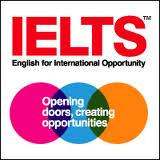OTTAWA, ONTARIO--(Marketwire - July 28, 2011) - You've made Canada your new home and are probably in the process of searching for a place of your own. Looking for a home can be a very exciting experience that can be both rewarding and challenging.
As Canada's national housing agency, Canada Mortgage and Housing Corporation (CMHC) has been providing Canadians – including new Canadians like you – with information and tools to help you make informed homeownership decisions.
Canada's population growth is becoming increasingly reliant upon immigration. In the 2006 Census, close to six million Canadians identified themselves as immigrants, representing about 20 per cent of the entire Canadian population.
To help new Canadians make informed housing-related decisions and find safe, affordable homes for their families, Canada Mortgage and Housing Corporation has developed a multi-language one-stop online source for housing-related information. Visit CMHC at www.cmhc.ca/newcomers.
CMHC wants to provide newcomers to Canada with relevant and culturally appropriate housing-related information. A wealth of information is available for newcomers in both official languages – English and French – as well as in Mandarin/Simplified Chinese, Arabic, Punjabi, Spanish, Tagalog and Urdu.
This housing-related information is divided into three areas to make things simpler: Renting an apartment - for most newcomers, your first home will likely be a rented house or apartment. Renting a home should provide you with a safe place where you can begin to adjust to your new life in Canada. It can also give you the time to look for a home to buy without feeling pressured into making a quick decision; Buying a home - CMHC has created a series of guides and tools that take you through the home buying process; and Looking after your home – which will help guide you on how to take care of your home and prevent problems before they happen. Don't forget to also check out the videos on buying, renting and renovating a home.
For more information or for FREE information on other aspects of renting, buying and renovating a home in Canada, visit www.cmhc.ca/newcomers. For 65 years, Canada Mortgage and Housing Corporation has been Canada's national housing agency and a source of objective, reliable housing expertise.
As Canada's national housing agency, Canada Mortgage and Housing Corporation (CMHC) has been providing Canadians – including new Canadians like you – with information and tools to help you make informed homeownership decisions.
Canada's population growth is becoming increasingly reliant upon immigration. In the 2006 Census, close to six million Canadians identified themselves as immigrants, representing about 20 per cent of the entire Canadian population.
To help new Canadians make informed housing-related decisions and find safe, affordable homes for their families, Canada Mortgage and Housing Corporation has developed a multi-language one-stop online source for housing-related information. Visit CMHC at www.cmhc.ca/newcomers.
CMHC wants to provide newcomers to Canada with relevant and culturally appropriate housing-related information. A wealth of information is available for newcomers in both official languages – English and French – as well as in Mandarin/Simplified Chinese, Arabic, Punjabi, Spanish, Tagalog and Urdu.
This housing-related information is divided into three areas to make things simpler: Renting an apartment - for most newcomers, your first home will likely be a rented house or apartment. Renting a home should provide you with a safe place where you can begin to adjust to your new life in Canada. It can also give you the time to look for a home to buy without feeling pressured into making a quick decision; Buying a home - CMHC has created a series of guides and tools that take you through the home buying process; and Looking after your home – which will help guide you on how to take care of your home and prevent problems before they happen. Don't forget to also check out the videos on buying, renting and renovating a home.
For more information or for FREE information on other aspects of renting, buying and renovating a home in Canada, visit www.cmhc.ca/newcomers. For 65 years, Canada Mortgage and Housing Corporation has been Canada's national housing agency and a source of objective, reliable housing expertise.
Contact Information
For story ideas or to access CMHC experts or expertise
CMHC Media Relations - National Office
(613) 748-2799
media@cmhc-schl.gc.ca
CMHC Media Relations - National Office
(613) 748-2799
media@cmhc-schl.gc.ca
















